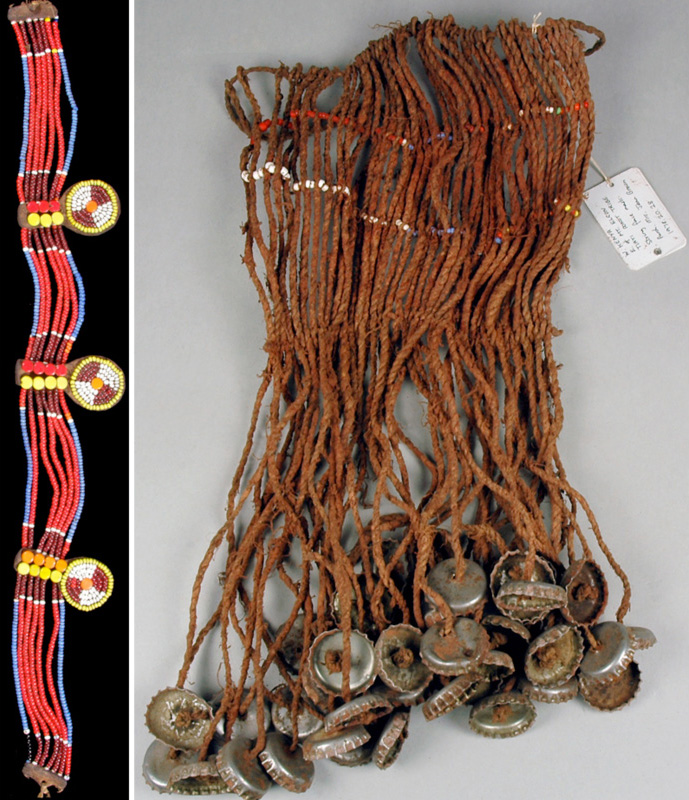Beaded headband and string mask
Pokot people, Kenya
 Collected and purchased from Jean Brown in 1978; 1978.20.275 and 1978.20.28
Collected and purchased from Jean Brown in 1978; 1978.20.275 and 1978.20.28
The Pokot people live in the Baringo and Western Pokot districts of Kenya and Uganda. Bodily decoration plays an important part in their culure, as do the ceremonies that mark the transitions in people's social lives. These can include the cleansing of a couple expecting their first child; the cleansing of a newborn; marriage, harvest and healing ceremonies; and perhaps most importantly, coming-of-age ceremonies.
The mask on the right is made of strings, coated with fat and red ochre. It is embellished at the ends with bottle-tops, which would have made a tinkling noise when worn. Such masks were made by a teenage boy's mother and sisters for him to wear in the period of seclusion prior to his final circumcision ceremony. A mother would not be permitted to see her son until the final ceremony, known as sapana.
Red ochre is used to decorate and identify ornaments worn by both uncircumcised boys and girls among the Pokot, so once worn, the seclusion mask was passed on to an uncircumcised girl, who wore it as a dancing apron or a head ornament.
After circumcision (which is not obligatory among all Pokot peoples) the final stage of sapana begins, in which the initiate is provided with lifelong friends and a certain degree of economic security. His family will invite members of the neighboring hamlets to salute the boy's first spearing of a fat ox, which is then eviscerated. As the visiting warriors approach they engage in mock-attack to make their arrival more spectacular. They then perform a war dance with the local women, known as amumur. The women smear butter on the chests of the warriors and the initiate. A tribal elder then applies a mixture of milk and ox blood to the boy's torso as a further blessing, wishing him many cattle, children and wives. Finally, they all sit to eat the apportioned ox meat and drink calabashes of sour milk.
The dancing, singing and eating continues for several days as people slowly disperse. Finally it is just the initiate, his immediate seniors and his sub-set (peers) who are left. The latter help create a new hairstyle for him by creating a colourful cap of blue, red and white clay. On the left here is a headband made from seven colourful beaded strands connected by beaded medallions and secured with leather fasteners. This is worn by the initiate - now a man - after sapana, along with the mudpack head-dress, to signify his new status as an adult.
